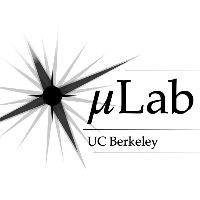—
 The Moving Universe Lab
The Moving Universe Lab
New paper alert: Assessing the Impact of Binary Systems on Microlensing Using SPISEA and PopSyCLE Population Simulations (Abrams et al. 2025)
New paper alert: Microlensing Discovery and Characterization Efficiency in the Vera C. Rubin Legacy Survey of Space and Time (Abrams et al. 2025)
New paper alert: CuRIOS-ED: The Technology Demonstrator for the CubeSats for Rapid Infrared and Optical Surveys Mission (Gulick et al. 2024)
Research Highlight: A Reanalysis of the Isolated Black Hole Candidate OGLE-2011-BLG-0462/MOA-2011-BLG-191 (Lam and Lu 2023)
Research Highlight: An Optical Distortion Solution for the Keck I OSIRIS Imager (Freeman, Lu, Lyke et al. 2023)
Research Highlight: Stellar Populations in the Central 0.5 pc of Our Galaxy III: The Dynamical Sub-structures (Jia, Xu, Lu et al. 2023)
What do we do?
The Moving Universe Lab is led by Prof. Jessica Lu at UC Berkeley and focuses on the study of stars and black holes in the nearby universe. We conduct a search for free-floating stellar-mass black holes in the Milky Way using photometric and astrometric microlensing. We are also work on new adaptive optics systems that correct image blurring from the Earth's atmosphere due to turbulence near the ground. We also study how star formation changes in extreme environments such as in massive young clusters and the Galactic Center. These areas of research require high-precision astrometry and high resolution infrared images from space telescopes and ground-based telescopes equipped with adaptive optics (AO).
Instrumentation
Keck Adaptive Optics
Ultra Wide Field Adaptive Optics
Roman Space Telescope
CubeSats
Education and Outreach
Lab Members
Codes, Tools, and Resources
Our lab produces a number of publicly available codes and tools:
BAGLE (Bayesian Analysis of Gravitational Lensing Events):
BAGLE allows the modeling of gravitational microlensing events both photometrically and astrometrically.
SPISEA (Stellar Population Interface for Stellar Evolution and Atmospheres):
SPISEA is a Python package that generates single-age, single-metallicity populations (i.e., star clusters). It gives the user control over many parameters:
PopSyCLE (Population Synthesis for Compact-object Lensing Events):
PopSyCLE is a Python add-on to the Galaxia modeling code that will make a fake Milky Way populated with stars, white dwarfs, neutron stars, and black holes. The synthetic population can be “observed” for microlensing events.
NIRC2 and OSIRIS Image Reduction Pipeline:
The KAI (Keck AO Imager) Imager Pipeline is a Python-based (with IRAF dependencies) data reduction pipeline for the NIRC2 and OSIRIS adaptive optics imagers at the W. M. Keck Observatory.
FlyStar
FlyStar is a tool for cross-matching and transforming starlists for high-precision astrometry projects. It is currently under development.
AIROPA (Anisoplanatic and Instrumental Reconstruction of Off-Axis PSFs for AO)
AIROPA is a source extraction package that handles the anisoplanatic and instrumental reconstruction of off-axis PSFs for AO.
Funding Acknowledgments
We are grateful that this work is supported by funds, grants, and awards from: UC Berkeley, the National Science Foundation, NASA, the Heising-Simons Foundation, the Gordon and Betty Moore Foundation, and the W. M. Keck Foundation.